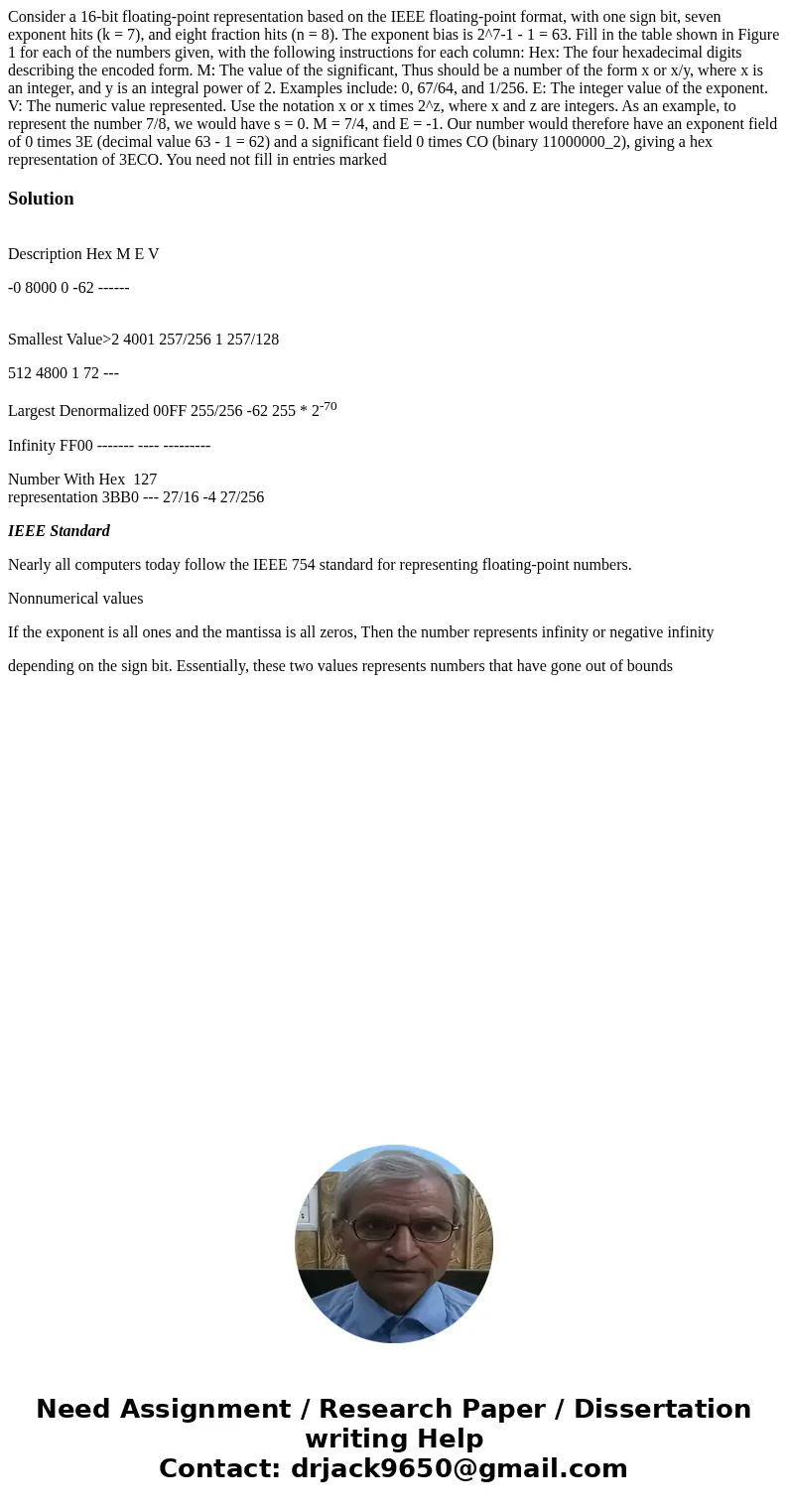Consider a 16bit floatingpoint representation based on the I
Consider a 16-bit floating-point representation based on the IEEE floating-point format, with one sign bit, seven exponent hits (k = 7), and eight fraction hits (n = 8). The exponent bias is 2^7-1 - 1 = 63. Fill in the table shown in Figure 1 for each of the numbers given, with the following instructions for each column: Hex: The four hexadecimal digits describing the encoded form. M: The value of the significant, Thus should be a number of the form x or x/y, where x is an integer, and y is an integral power of 2. Examples include: 0, 67/64, and 1/256. E: The integer value of the exponent. V: The numeric value represented. Use the notation x or x times 2^z, where x and z are integers. As an example, to represent the number 7/8, we would have s = 0. M = 7/4, and E = -1. Our number would therefore have an exponent field of 0 times 3E (decimal value 63 - 1 = 62) and a significant field 0 times CO (binary 11000000_2), giving a hex representation of 3ECO. You need not fill in entries marked 
Solution
Description Hex M E V
-0 8000 0 -62 ------
Smallest Value>2 4001 257/256 1 257/128
512 4800 1 72 ---
Largest Denormalized 00FF 255/256 -62 255 * 2-70
Infinity FF00 ------- ---- ---------
Number With Hex 127
representation 3BB0 --- 27/16 -4 27/256
IEEE Standard
Nearly all computers today follow the IEEE 754 standard for representing floating-point numbers.
Nonnumerical values
If the exponent is all ones and the mantissa is all zeros, Then the number represents infinity or negative infinity
depending on the sign bit. Essentially, these two values represents numbers that have gone out of bounds

 Homework Sourse
Homework Sourse